Barcode Printers in Trade Automation
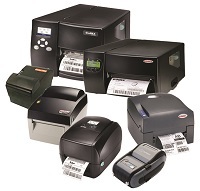 Printers bar codes and labels occupy an important place in the process of automation of trade and warehouse activities. With the help of such devices it is possible to organize the process of labeling in a small, large or medium-sized enterprise.
Printers bar codes and labels occupy an important place in the process of automation of trade and warehouse activities. With the help of such devices it is possible to organize the process of labeling in a small, large or medium-sized enterprise.Printers vary in speed, length, width, resolution and type of printing, as well as support for various interfaces, options and accessories. In this article, we will tell beginner automators about what kind of label printers are and how to use them more efficiently, as well as why you should choose this or that device.
By the way of printing, two main types of printers are distinguished: thermal and thermal transfer. Each of these types has its own characteristics. Choose a particular device is necessary on the basis of specific conditions.
• Desktop
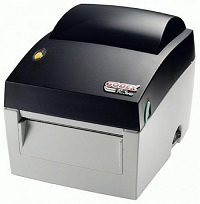 Printers of this class take up little space in equipping workplaces and have optimal performance.
Printers of this class take up little space in equipping workplaces and have optimal performance.')
As a rule, they are widely used in offices, in small enterprises, where the need for printing does not exceed 5000 labels per day.
Desktop thermal printers should include Godex DT2 / DT4, Zebra GK420D. Among the most popular compact thermal transfer printing devices are the Godex G300 / G330, G500 / G530.
• Industrial
 To equip large enterprises, there are whole lines of industrial barcode printers.
To equip large enterprises, there are whole lines of industrial barcode printers.Such devices have high performance and the ability to install special accessories: winders and label holders, rotary cutter, etc. Such models as Godex EZ6200 plus, EZ6300 plus, EZ2200 aroused particular interest in the market due to the optimal ratio of price and quality.
• Mobile
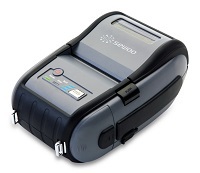 Mobile printers have an important advantage - compact size. Devices can work autonomously or from a network.
Mobile printers have an important advantage - compact size. Devices can work autonomously or from a network.They can be equipped with both wireless Wi-Fi (Sewoo LK-P11SW) and Bluetooth (Sewoo LK-P11SB) support.
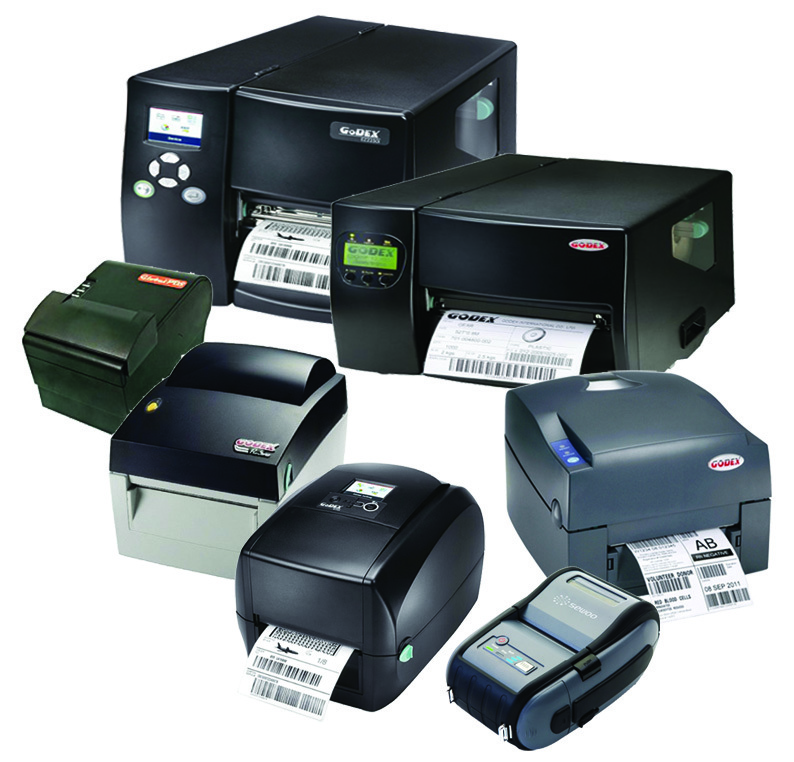
Thermal printing
Thermal printers have an attractive cost and low maintenance cost. As consumables need only thermal paper. The service life of such labels until fading is several months, depending on the temperature conditions. However, the cost of printing and supplies is very affordable. The thermal printer will be the optimal choice for equipping a fast-service cash desk or making tickets, where the label is made for several hours or days, and subsequently recycled. A thermal label can be identified by swiping a fingernail across its surface, as a result of which a black mark should remain.
Thermal Transfer Printing
Thermal transfer printing technology used in industrial environments. High quality, durability and resistance to abrasion due to thermal transfer technology. That is, in contrast to thermal, there is the use of a coloring layer (ribbon). The service life of thermal transfer labels can be several years. Another plus is the variety of materials, including printing on synthetic, nylon ribbons, gloss, etc. As a rule, they are also called semi-glossy. Paper labels for thermal transfer printing are used more often due to the affordable cost and are used for local inventories and labeling. However, synthetic have a higher resistance to moisture and abrasion.
Thermal transfer printers can be produced both in a compact desktop package and in industrial series for large print volumes.
Comparative characteristics of thermal and thermal printing.
| thermal printing | thermal transfer printing | |
| carriers | thermal paper | nylon, synthetic, polymer labels, |
| Consumables | only thermolabels | thermotransfer labels, ribbons |
| ribbons | not used | wax (WAX), resin (RESIN), wax + resin (WAX + RESIN) |
| print resolution | 203/300 dpi (from model) | 203/300 dpi (from model) |
| label life | several months | some years |
| paint resistance to abrasion, mechanical stress, critical conditions | low | high |
| average printhead life | about 50 km | about 50 km. |
| most popular printers | Godex DT2, Godex DT4, ZEBRA GK420d (USB + RS232 + LPT) | Godex G300 / 330, Godex G500 / G530 , Godex RT700 / 730. |
Printer programming
Modern label printers support the work with 1C software products of different versions. In order to print labels from the program, it is enough to install the Windows driver. Also for those who are used to working with Linux, there are drivers for this OS.
Each manufacturer of label printers has special software.
If you compare the software of these 2 brands, then Godex has more advantages.
Zebra printers are equipped with ZebraDezigner test software. Full versions are not included and must be purchased for an additional fee. For Zebra printers, device management is performed using the ZPL and EPL programming languages.
Godex printers are equipped with the free GoLabel program, and the command set is set in a special Godex EZPL programming language, and the devices are able to recognize both ZPL and EPL languages. At the same time, printers support auto-switching mode.
The GoLabel program allows you to create and edit label layouts, synchronize with the base 1C. The program is equipped with a wide range of basic fonts and supports loading additional ones, which allows you to fully maintain the printer and make even complex label mockups. Unlike the professional Bartender program, it is completely free and has quite a wide functionality, including working with SQL. GoLabel - comprehensive software for connecting the printer, making settings, working with layouts, downloading fonts, etc.
Application and connection options for label printers:
- Connection to POS systems or PC via RS232, USB, LPT interfaces. This is usually one of the standard conditions for using label printers. It is convenient to send a job to the printer directly from the 1C database from the computer. Connection via LPT (parallel port) is less common. Some models of Godex and Zebra printers continue to be equipped with an LPT port in addition to the more popular USB and RS232.
- Printing via wireless interfaces. In the case of the presence of a Wi-Fi module, the printer does not need to organize a wired network. Some models of mobile printers are equipped with high-speed Wi-Fi interface standard 802.11g. Desktop and mobile printers do not have this module. However, using a multichannel interface converter RS232-Wifi, you can organize this solution.
- Organization of the print server. If you have an Ethernet interface, you can send jobs to the printer from several sources connected by a local network. You can organize a print server using WiFi.
- Barcode scanner and printer integration without PC. Through a PC or POS monoblock, you can control the operation of various other devices and peripherals. However, if mobile devices are needed, the operation of the printer and the barcode scanner can be synchronized directly without the participation of other devices. If the scanner has a USB Hid interface, you can print the barcode on the printer immediately after scanning.
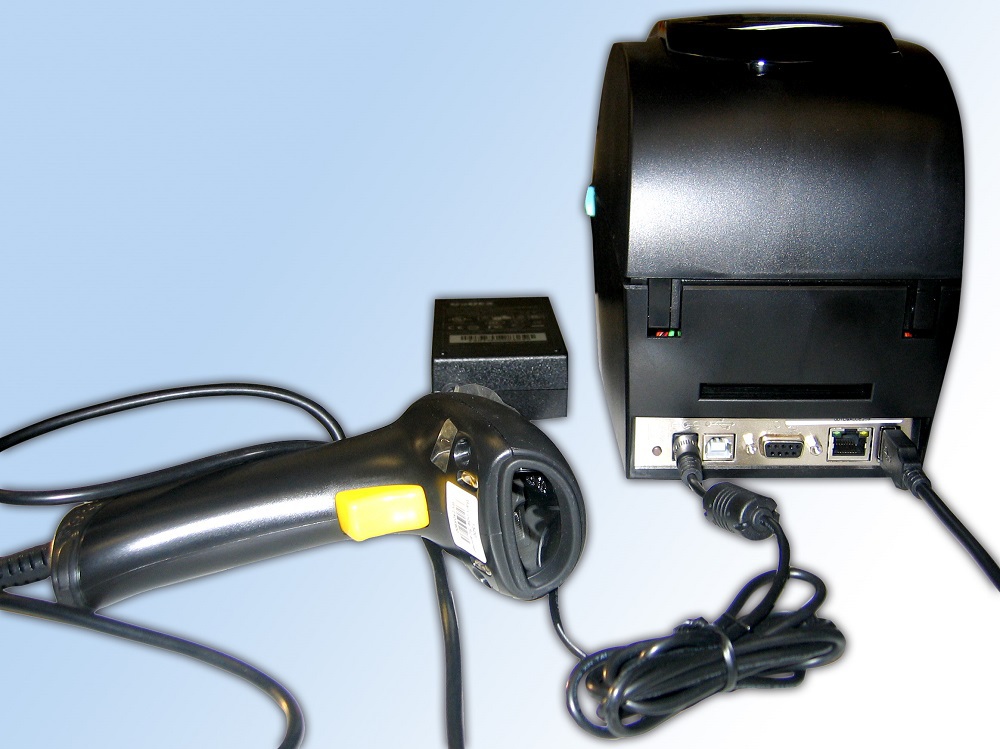
- Trade automation often uses weighing complexes for labeling (trade scales with label printer). Fast label printing helps reduce the time to service visitors. If the store has standard trade scales, but they do not have a built-in printer, then it does not always make sense to buy an expensive weighing complex for labeling. Using a mobile or desktop barcode printer and a PC, you can design a system for organizing weight labeling in a supermarket.
Source: https://habr.com/ru/post/244437/
All Articles